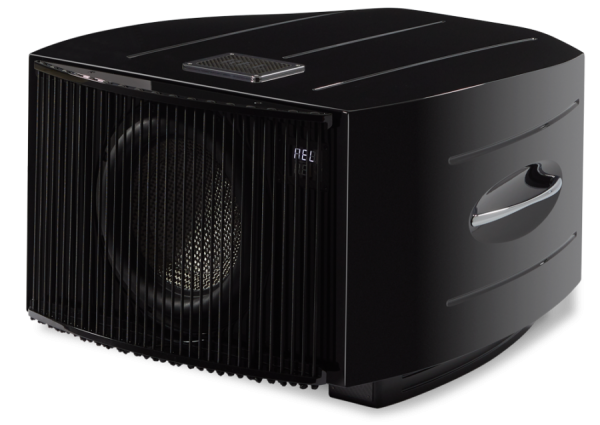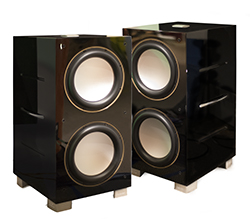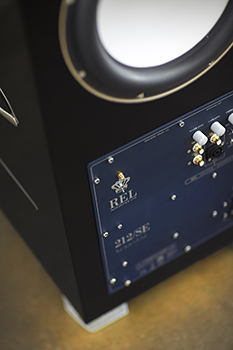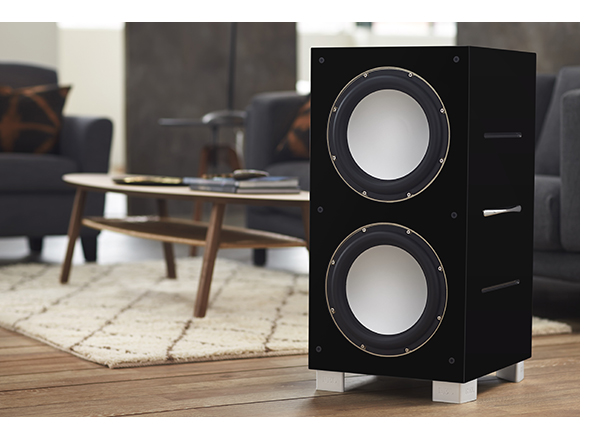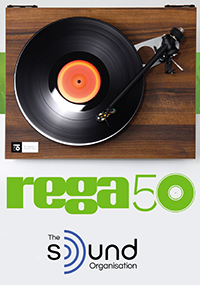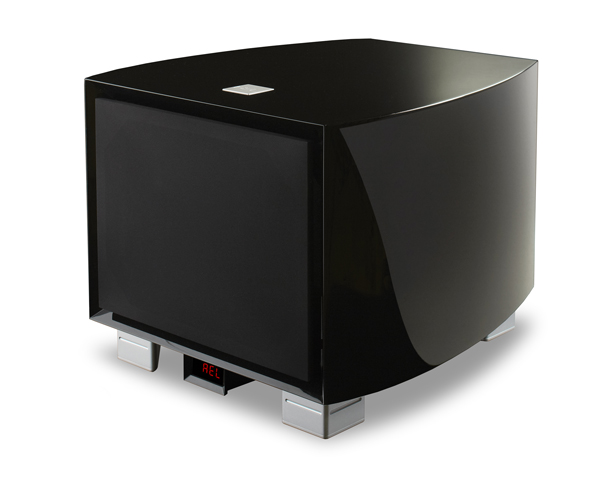 A recurring theme in country music and, perhaps, in life is that you never realize what you’ve got until it’s gone. Truer words were never spoken in the world of audiophilia when it comes to reproducing bass. However, a subwoofer can drive you to madness, much like a high-maintenance romantic interest. When it’s right, you’re giddy with delight and things couldn’t be better, but when it’s wrong, all you do is focus on said partner’s shortcomings—and, eventually, you both go your separate ways.
A recurring theme in country music and, perhaps, in life is that you never realize what you’ve got until it’s gone. Truer words were never spoken in the world of audiophilia when it comes to reproducing bass. However, a subwoofer can drive you to madness, much like a high-maintenance romantic interest. When it’s right, you’re giddy with delight and things couldn’t be better, but when it’s wrong, all you do is focus on said partner’s shortcomings—and, eventually, you both go your separate ways.
Having spent the last 20 years on and off the bus with a wide variety of subwoofers, I can highly recommend the REL G-2 for any number of reasons. Perhaps this subwoofer’s greatest selling point, however, is that it comes with a remote. My enthusiasm regarding this feature doesn’t (necessarily) speak to my inability to escape my listening chair’s gravitational pull; it is more to comment that having this wireless device in my hand satiates the nagging voice at the back of my mind that is always just slightly dissatisfied with the subwoofer settings. The REL G-2 eliminates that stress completely by providing just the right amount of low-frequency (or LF) reinforcement right at your fingertips.
The G-2 is also easy to set up—that is, it’s as easy to set up as a 90-pound anything can be. Thus, I suggest that even our more-muscular readers enlist help when moving the G-2, because it’s just big and awkwardly shaped enough to be a little tough for one person to lift. Many users may even decide that incorporating a few of these subs into their system is necessary. In this case, you should enlist the aid of an installer or, at the very least, a handful of burly buddies.
Sumiko Audio, the importer of REF subwoofers in Berkeley, CA, has a sizeable showcase of three G-1s flanking either side of Sonus faber’s celebrated flagship loudspeakers (dubbed simply “The Sonus faber”). The audio experience this system provides is understandably impressive. The LF performance is effortless, all encompassing and seamlessly integrated with the main speakers. The bass swells up from the performance with an ease that suggests a major paradigm shift in how the lowest musical notes should be handled.
Priced at $3,495, the G-2 is slightly smaller in stature and reach than the larger G-1, priced at $4,495. The G-2 uses a long-throw 10-inch woofer with a carbon-fiber cone and a 450-watt onboard amplifier, whereas the G-1 uses a 600-watt amplifier to drive its 12-inch woofer. Down only 6 dB at 18 Hz, the G-2 should provide enough bass grunt for most users, either by itself or as a pair, but it can also be stacked and used as part of an array.
Major Differences
REL manages the lower frequencies differently than other manufacturers—and does so with excellent result. While the company offers line-level RCA inputs, these should be used only as a last resort. The supplied Neutrik speakON connector utilizes a high-level connection that goes directly to your power amplifier’s speaker outputs. The sub’s high impedance does not affect loading of the main speakers, thus allowing the character of your amplifier’s sound to carry forward into the subwoofer. Consulting the instruction manual and using my preamplifier’s outputs to drive the G-2 still results in decent sound. When switching power amplifiers, from the Audio Research REF 150 to the Burmester 911 to the Pass Labs Aleph 3, a slight disconnect between main speakers and subwoofer exists. However, during all of this, the bass reproduction does not change in character, even with these three very different amplifiers via the RCAs. Moving to the provided speakON input reveals the variations between amplifiers more easily, with a more seamless blend between the main speakers.
Those wanting to use the G-2, or multiple G-2s, in a multichannel system will be happy to find that the sub can accommodate the .1/LFE signal from your processor of choice. It also has a unique grounding circuit to work with class-D amplifiers or monoblock power amps. All of this is clearly outlined in the well-written manual.
Though it adds cost and complexity, the G-1 and G-2 both use MOSFET class-AB amplifiers with massive power supplies instead of the class-D amplifiers found in many other subwoofers. REL claims that its subs to have the fastest crossover filter networks, with a rise time of only 4 milliseconds. I’m firmly convinced that these features, along with an additional filter with a gentle slope that removes content above 250 Hz, contribute to the level of fine detail that the G-2 offers.
REL prefers corner loading for the G-2, and that’s where I’ve had the best luck with the company’s subs in the past—so why mess with good results? And this is where that nifty little remote control comes in handy. As I said, fine-tuning a subwoofer, no matter what brand and by what method you choose, can make your hair fall out. Like me, I’m sure you have your favorite tracks with deep-bass information that you use to audition any speaker, regardless of whether it has a subwoofer or not.
Now, as much as I dislike Jennifer Warnes’ “Ballad of the Runaway Horse,” I’ve always seen various Sumiko employees use this track to optimize speakers to great success, so when in Rome… While this track certainly impressed, even Romans like to party, so I moved on to something with a little more oomph for my review of the G-2. With the best balance of weight and speed achieved, “Kill Everybody” from electronica master Skrillex blew me out of my listening chair—just like the guy in the Maxell ad from the 1980s. The G-2 gives new meaning to the term “room lock.” Should Jennifer Warnes or a real-time analyzer not be your cup of tea, a series of test tones (like those from the early Stereophile test discs) simplify the process. As you go down the frequency range, the transition from main speakers should appear at the same level. It should also be difficult, if not impossible, to discern the location of the subwoofer when using just your ears.
Controlling this from your listening position dramatically reduces setup time, allowing you to remain planted in the same spot while making quick, small changes without having to psyche yourself out with aural memory tricks. But best of all, the remote allows you to fine-tune on the fly. No matter how great the G-2 sounds with your favorite bass track, it needs to be bumped up a touch up for Skynryd’s album Nuthin’ Fancy, and then way back down for the latest Cat Power release, Sun. The LED indicator at the bottom of the G-2 lets you know the sub’s level, frequency and phase (0 or 180 degrees). This makes up for the tiny though stylish type on the remote. If you have kids or inquisitive friends, be sure to use the settings lock feature.
Fortunately, you’re usually never more than a click or two away on the level control and, depending on your main speakers, the crossover frequency can even benefit from a nudge now and then. This takes the G-2 from merely great to awesome, and the more time you spend with the G-2, you’ll notice a more immersive experience at all listening levels.
 Carry That Weight
Carry That Weight
The G-2 performs well with a wide range of speaker systems; but, in keeping with the REL philosophy of a sub-bass system with the sub augmenting the deepest frequencies, it is not intended to be part of a sub/sat system. However, it still performs incredibly well throwing said suggestion to the wind, dialing the crossover frequency up to the 50-to-60-Hz range and using it with stand-mount monitors, or even ESLs.
Crossed over at 30 Hz or below, it’s virtually impossible to place the location of G-2 in the room, but it does start to lose a bit of its stealthiness when crossed over at a significantly higher point. I suggest a pair of G-2’s if you need to operate your system this way for best results. Fortunately, the G-2 has more than enough speed to keep up with any speaker you pair it with.
As good as the G-2 works with small speakers or panels, a full-range speaker system allows the G-2 to reach its full potential. Crossover frequency now lowered to 27 Hz (adjustable in 1-Hz increments) the $3,495 G-2 brings the $22,900 Elipsa SE speakers eerily close in sound to that of the $45,000 Sonus faber Stradivaris. Even my reference GamuT S9s, which are only down 3 dB at 18 Hz, open up with the G-2—and I now find myself dreaming of six of these!
Midrange Augmentation
Properly installed, the G-2 feels practically invisible, as it should, adding low-frequency reinforcement to the main speakers. And there remains an equal benefit through the mid-band, which REL likes to refer to as “The REL effect.” You’ll know you have the G-2 set just right when turning it on makes the side walls in your listening room disappear and when even musical selections with minimal low-bass content spread out across the soundstage with a bigger and broader effect than before.
Using the sub in this mode, only bringing up the deepest frequencies, helps convey spatial cues present in the recording space. Even string quartets or acoustic music with no apparent major LF content open up and breathe, with my listening room feeling much bigger than it is. I think the fourth dimension is deep bass, and the REL G-2 does it right.
Sampling familiar tunes, the wood block in Tom Petty’s “A Face in the Crowd” is now four feet in front of my face, where it was back in line with the speakers when the G-2 level is set back to zero. Annie Lennox’s background vocals in “No More I Love You’s” appear way off center and down almost at floor level. One-note bass is a thing of the past with the G-2. Jaco Pastorius’ fretless bass line in Joni Mitchell’s “Jericho,” from her album Don Juan’s Reckless Daughter, comes through with the healthy dose of speed and overtones that made him famous. Regardless of musical program, having the G-2 in the system is always a benefit.
 Don’t Abuse the Power
Don’t Abuse the Power
The REL G-2 works equally well in both of my listening rooms—my main room is 16 feet by 25 feet; my second room is 13 feet by 16 feet—but, like any addictive substance, one has to resist the urge to overindulge. For the first few days, it was fun to play a lot of Deadmau5, Skrillex and, of course, the artist formerly known as Snoop Dogg (who now calls himself Snoop Lion). Finding new weak spots in my walls, I got used to the G-2 and prudence became more the rule than the exception.
Having auditioned many subwoofers over the years, the REL G-2 is now at the top of my overachievers list and is featured as a TOP TONE component in issue 48. If you’d like to unlock your system’s full potential, you should audition one—or maybe six!
The REL G-2 Sub-Bass System
MSRP: $3,495
www.rel.net (Factory)
www.sumikoaudio.net (US importer)
Peripherals
| Analog source |
AMG V-12 turntable Lyra Kleos cartridge |
| Digital source |
dCS Paganini system Sooloos Control 15 Aurender S10 |
| Preamplifier |
Burmester 011 |
| Power Amplifier |
Burmester 911 mk.II |
| Phonostage |
Zesto Andros |
| Speakers |
Acoustat 1+1 Dynaudio Confidence C1 II |
| Cable |
AudioQuest Sky IC AudioQuest |
| Power |
Audience aR6-Tss |
| Accessories |
GIK room treatments Audio Desk Systeme RCM Furutech DeMag and DeStat |
